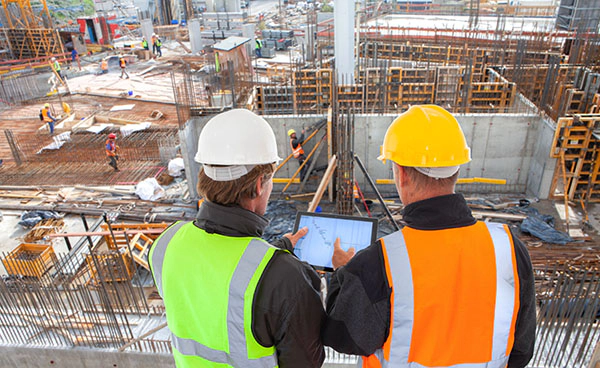SEE WHAT OUR CEO HAS TO SAY ABOUT FINTECH AND CONSTRUCTION.
The failed attempt to re-establish the Australian Building and Construction Commission (ABCC) by the Turnbull government has yet again put a spotlight on the productivity and lack of technology innovation in the Australian construction sector. Turnbull wants an independent body to keep an eye on what he has labelled “dodgy” practices, leading to disputes, lost productivity and many businesses crumbling.
However, with the fate of the watchdog’s return dependent on the July 2 election result, and many in the sector feeling regulation isn’t the answer, it’s now up to the building industry to find its own solution. The construction sector consistently ranks in the bottom three innovative industries in Australia. Recent ABS data reveals that only a third of construction businesses could be classed as ‘innovation-active’1compared with more than half of businesses in the warehousing, media and telecommunications and retail sectors.
In an environment of intense competition and shrinking margins, coupled with forecasts that construction is on the decline thanks to the mining downfall, the building sector can no longer fall back into old practices.
THE BIG DRAIN ON PRODUCTIVITY
The building industry loves to fight – two thirds of all industrial disputes in Australia are in the construction sector. Since 2012 when the ABCC was abolished, industrial disputes have increased by 34 per cent, leading to hold ups on the build. In fact, in 2015 alone, 44 per cent of lost working days were in the construction sector.According to a December 2015 senate enquiry report into
According to a December 2015 senate enquiry report into insolvency in the Australian construction industry, the majority of arguments stem from an “unacceptable culture of non-payments of subcontractors for work completed on construction projects”. Essentially, fist-fights over who did or didn’t do what and who did or didn’t get paid. I saw it first hand over nine years as a CFO for a construction company and it’s the main reason I founded Progressclaim.com.
Of course, there’s also a handful of other causes of disputes, such as disagreements over wages and safe working conditions. Regardless of why, the result is poor productivity.
But it’s not just contractors and workers that suffer – the $300 billion a year building industry is one of the largest growth sectors in Australia and is pivotal to a strong and thriving economy. Over the past decade it has accounted for between 8-10 per cent of annual GDP and has employed about the same percentage of Australians. However, a CRCCI study found that payment disputes cost the Australian economy around $7 billion a year. Just imagine how many more jobs could be created, how much quicker projects would be realised and how many more businesses would remain profitable if those disputes were eliminated.
IT’S TIME TO INNOVATE
Despite being laggards in the technology world, there’s no lack of innovative options available for the building sector. For example: Cross Laminated Timber (CLT) is a building material in high demand by Australian builders, thanks to its ability to reduce construction costs, waste and build times. Drones are being used by engineers to map and survey construction sites, while project managers and developers such as Laing O’Rouke use them to monitor build progress..
For architects, multi-dimensional Building Information Modelling (BIM) has completely revolutionised how infrastructure is planned, designed and built. And as construction design becomes more sophisticated, so has the software needed to coordinate a build, with platforms such as Viewpoint and Newforma making it easier to manage project information and workflow.
Fintech software is also growing in popularity, with Payapps now used on more than 100 Australian projects by major builders like Built, Mirvac and Icon to streamline the payment approval process, enabling all contract parties to administer payment claims in seconds via the cloud, saving time and money while minimising dispute risks. Wearable technology such as hardhats with 3D visor displays and safety vests that alert roadside workers of oncoming vehicles look to be the next frontier in site safety and could be key to reducing one of the leading causes of disputes.
So while a return of the ABCC remains in limbo, leaders in the building industry shouldn’t waste another second in addressing the outdated practices, manual pen and paper processes and fist-fight culture which is holding the sector back. Every construction business has a responsibility to do better, not just for the image of the industry, but their own bottom line. Technology is making all aspects of our lives easier and more efficient and it’s the construction companies that are quickest to adopt these innovations that will be prosperous in the long run.
See full article here: http://www.theurbandeveloper.com/construction-sector-needs-tech-innovation-not-regulation/




